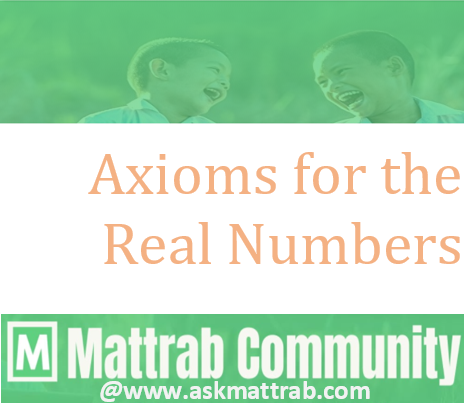Properties of Sets


Hello Readers!!
Click Here for a quick overview of Real numbers before proceeding with this note!!! :)
Field Axioms
1.Addition axiom
i. Closure Property | : | The sum of real number is always real value. |
ii. Commutative Property | : | The sum of two real numbers is the same whatever order they are added. |
iii. Associative Property | : | The sum of any two of the three real numbers with the third will be the same. |
iv. Additive Identity | : | If a ϵ R, then a+ 0 = 0 + a =a |
v. Additive Inverse | : | For every a ϵ R, there exists -a ϵ R such that: |
2. Multiplicative Axiom
i. Closure Property | : | The product of real number is always real value. |
ii. Commutative Property | : | The product of two real numbers is the same whatever order they are multiplied. |
iii. Associative Property | : | The product of any two of the three real numbers with the third will be the same. |
iv. Multiplicative Identity | : | If a ϵ R, then a.1 = 1.a =a |
v. Multiplicative Inverse | : | For every aϵ R(a≠0), there exists a-1 ϵ R |
vi. Distributive Property | : | If {a, b, c} ϵ R, then |
Order Axioms
i. If {a, b} ϵ R such that a>0 and b>0 then ab>0.
ii. If {a, b} ϵ R then one and only one of the following relation holds
a<b, a=b, a>b
iii. If {a, b, c} ϵ R such that a>b and b>c then a>c.(same is the case for '<')
iv. If {a, b, c} ϵ R such that a>b then a+c > b+c.(same is the case for '<')
v. {a, b, c} ϵ R
→If a>b then ac>bc when c>0
→If a>b then ac<bc when c<0
→If a>b then a/c>b/c when c>0
→If a>b then a/c<b/c when c<0
(same is the case for '<')
vi. If {a, b} ϵ R such that a<b, then there exists a real number such that: a<c<b